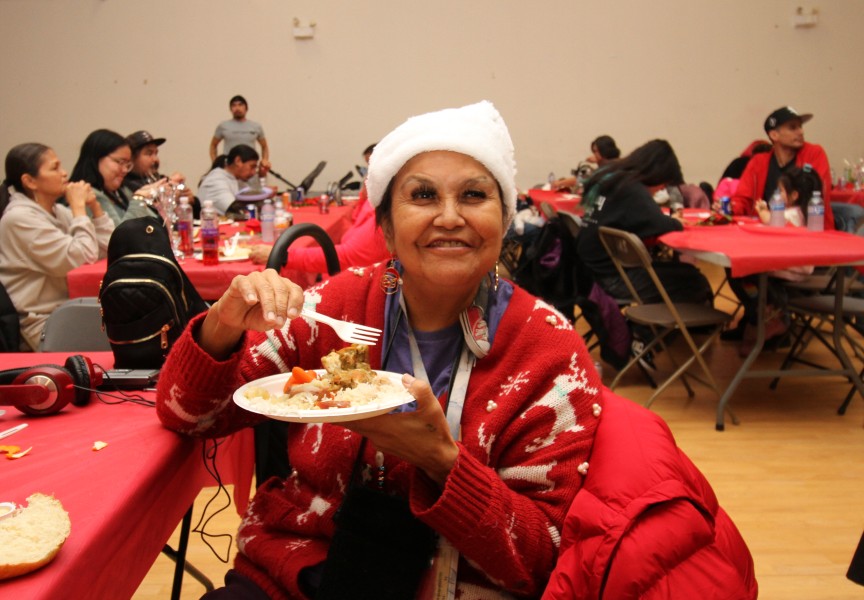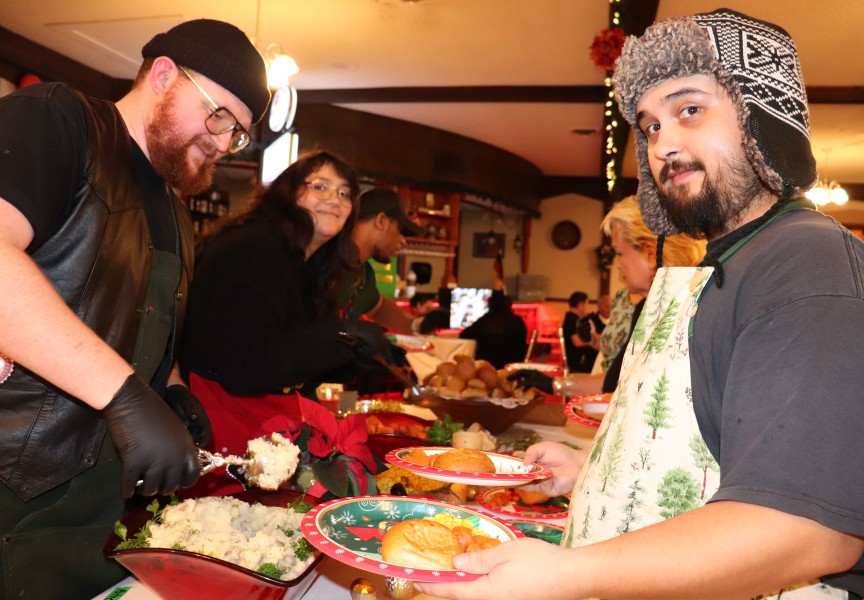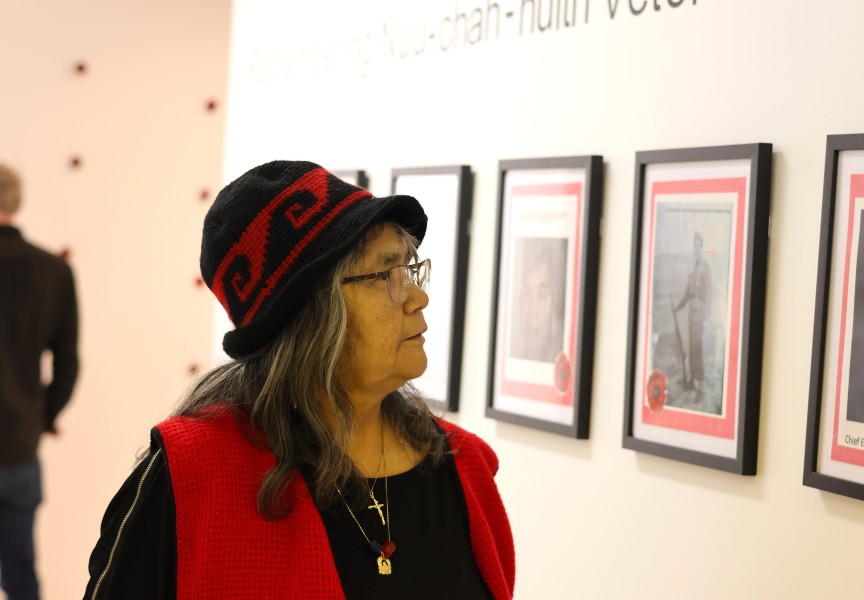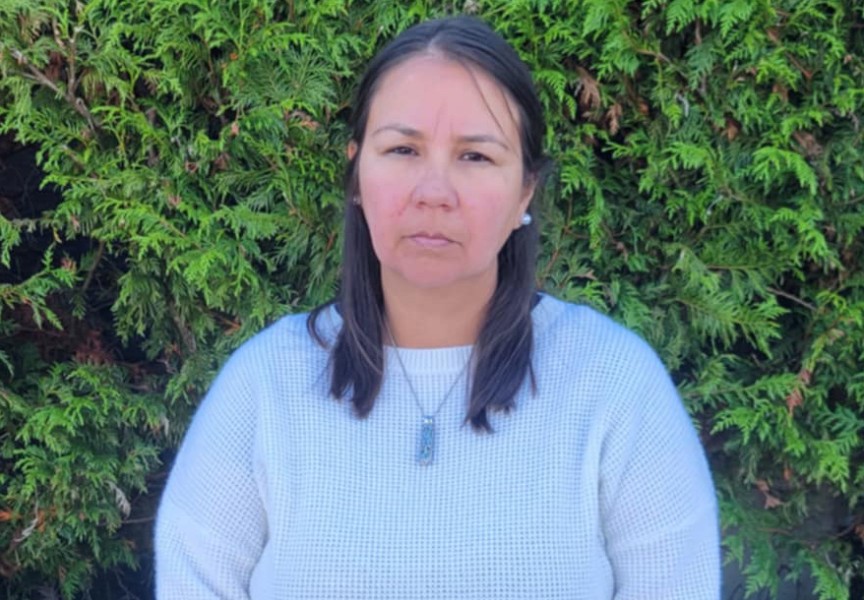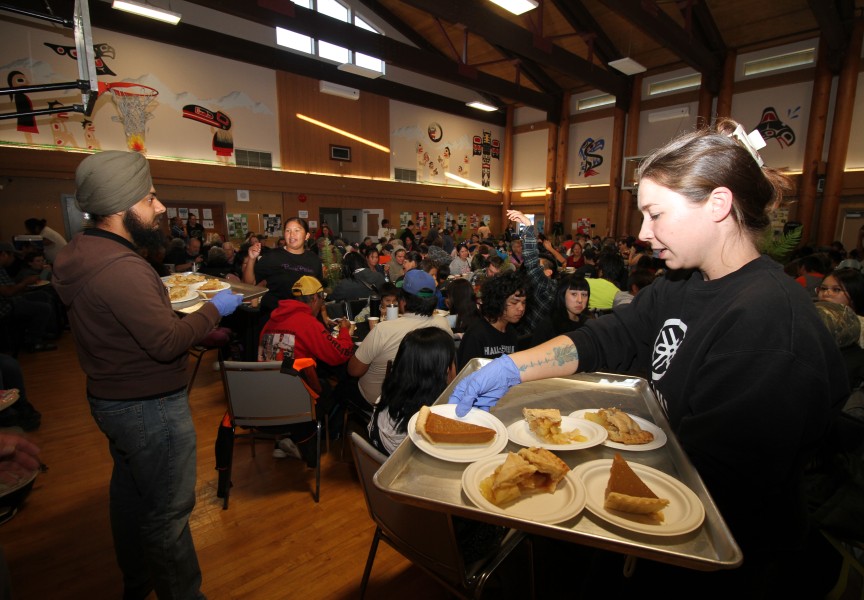Update: 11:30 a.m. Friday, Jan. 9, 2015
Contacted Friday morning, Hesquiaht administrator Bob Anderson confirmed that the thermal flow into the hot spring had rebounded to within 10 degrees Celsius of the normal temperature.
“As you know, yesterday Bernard (emergency coordinator Charleson) and Lisa (assistant Sabbas) went out to check on the hot spring and they reported that the little stream that carries the hot water down into the pools was actually cold. At normal times, you can’t really put your hand in there, because it is like, scalding. There was no smell of sulphur, no steam coming up. They didn’t have the test kit and thermometer with them.”
Anderson said he went back to the site Friday morning with Charleson and did some tests.
“There was steam coming off. There wasn’t an overpowering smell of sulphur, but once you got close to it, you could definitely smell it.”
On Friday morning, the water was “hot, but not scalding.”
At the source pool that provides a temperature baseline for the springs, the thermometer recorded 40 Celsius (104 Fahrenheit). The normal temperature is 50C (122F).
“So it’s made an incredible rebound overnight,” Anderson said. “It still has a ways to go, so we’re going to go back on Monday and see if it’s climbed back up from 40 to 50.”
At Ocean Outfitters in Tofino, Beth Yuhasz said clients who visited the springs on Thursday morning reported that the pools below the source spring were a comfortable temperature. Clients are advised the typical temperature is 109F, or 42.75C, she said.
Hot Springs Cove is a popular destination for clients, Yuhasz said, so had the springs stayed cold, it would have affected Ocean Outfitters.
“When there was an earthquake in Haida Gwaii, people who had trips booked were calling to ask, ‘Are we still going. Is it still hot?’ And I had to tell them it was a different spring. With all the misinformation and sharing, some people thought they were all the same spring.”
With the temperature apparently rebounding in the spring, Anderson said he has no reason to doubt the sequence of events reported by his emergency coordinator.
Update: We are getting confirmation from some community members that the Hot Springs are runninng hot. Recieved phone call from Adam with Tofino Times magazine who said he is onsite and the hot springs are hot. We are trying to reconnect with all our sources to bring you an update. Please stay tuned.
Update: 10:05 p.m. Jan. 8, 2015
Ha-Shilth-Sa talked with Lisa Sabbas by Facebook this evening, who was with Bernard Charleson as he tested the waters at the Hot Springs.
“I could put my hand right where it comes out,” Sabbas said. “Usually, you can’t put your hand at opening… Too hot.
“We went right to source…We went right to the opening...where it comes out of the earth.”
There was no sulphur smell, she said.
And it was a big sea. “Salt water not at source of spring.”
Folks from Tofino will be traveling over to the hot springs tomorrow to have a look. Charleson is heading over with a thermometer, Sabbas said.
Original Story:
A magnitude 4.8 earthquake created an underground disturbance that shut off the heated flow of water to the hot springs at Hot Springs Cove, reports Hesquiaht emergency coordinator Bernard Charleson. The spring is now running ice-cold.
The quake struck 13 kilometers east-northeast of Tofino at a depth of 25 kilometres.
“We spent most of the day checking for damage in people’s homes, so we just got out there to check it out. And there is no hot water in the spring. Usually, it’s just boiling,” Charleson said.
While the big spring is the best known, there are small hot springs dotted around the area, he explained.
“Our first thought is, maybe it will come back, or maybe it will come out somewhere else.”
Along with the loss of hot water, the sulphur smell is also missing, Charleson said, and the flow of salt water into the spring appears to have increased since a similar event a few years ago.
“Each earthquake we get, the water gets a little bit colder,” he said. “We’ll wait and see, but if it is the crack that we think it is, there’s not a very good chance that [the hot spring] will come back, because there is seawater seeping in right close to the surface.”
Last year, an earthquake off Haida Gwaii disrupted the thermal flow to local hot springs for months.
“We’re going to do some tests [Friday]. We’ll set up the thermometers and run some tests. But as of right now, there is no hot spring in Hot Springs Cove.”
Charleson was in his home at the north end of the village when the quake struck at 6:02 p.m.
“It was pretty minor at my house, but for other houses that are situated on rock, with cement foundations, the shaking was more severe. The south end of the village suffered more damage than the north end.”
Some of the houses suffered cracks in the foundation, cracks in the ceiling or damaged plumbing. Charleson and assistant Lisa Sabbas inspected each home in the village and registered new damage with color-coded spray paint.
For Hesquiaht elder Sue Charleson, each earthquake, even small, is a reminder that their village is always under threat of tsunami.
“I live in the south end of the village. It just lasted for a few seconds and my next-door neighbour didn’t even feel it, but every time there’s a shaking we remember the tsunami that wiped out our village.”
The destruction caused by the Good Friday Tsunami in 1964 forced many Hesquiaht to leave their village, and for some, it was a long time before they were able to return.
“I was in Ucluelet for a while, and in Port [Alberni]. I only came home in 1992, to work in the fisheries program.”
Sabbas said with the “Big One” looming somewhere on the horizon, the experience serves as a wake-up call for the close-knit community.
“It was the first time I had ever felt an earthquake,” she said.
When the quake struck, Nuu-chah-nulth members were quick to contact each other through social media. For people on the West Coast, the original social media tool is still in use. Before jumping onto Facebook, many families put out the alert on VHF Channel 68, which is used as the hailing frequency on the West Coast.
In Ahousaht, Travis Damon Thomas was coaching his basketball team in the gym at Maaqtusiis Secondary School when the quake hit. He immediately sent out a message on Facebook to advise he was sending his athletes home.
“It shook the big red pipes up in the rafters. It felt like something hit the gym,” he said. “We stopped and went towards the doorways.”
While there was no visible damage in the gym, Thomas advised his players to go home, and to message him when they arrived.
“I went home and got on the VHF. We have a search and rescue in Ahousaht. They advised us on the VHF that there was no tsunami expected,” he said.
Surprisingly, Nitanis Desjarlais reported that the quake rattled her home on Hector Road in Port Alberni.
“It sounded really loud, like a giant jumped on the house,” Desjarlais said.
When the shock wave hit, husband John Rampanen was in the kitchen cooking dinner for 10. Her Facebook post captures the immediate controlled chaos that happened next:
“We yelled for all the kids to gather in the kitchen. I immediately went on Facebook to see if anyone else felt it too. I got the kids to get their boots on and I think I freaked out my babies.. Not so calm when it first happened. I was ready to run out into the trees. (Which isn’t the best place to be if an earthquake is happening).”
Desjarlais explained that emergency planning has become a priority for her family. That stems from their experience while living “off the grid” on Seitcher Bay in Ahousaht traditional territory.
“There was a tsunami warning and we were pretty isolated, so we went right up the mountain in the middle of the night. It was quite the experience for having done that. We realized that this could happen again, with a tsunami this time.”
With that in mind, the family hacked out a safe passage up the mountain and built a safe storage locker for emergency provisions. The locker is still there.
When the family relocated to Port Alberni, they created an emergency preparedness plan that they were able to follow when their home was hit in the flooding along the Somass River in December.
“We didn’t have to move, but we had two feet of water in the basement. But we didn't know if the river was going to keep rising.”
The family maintains what they call the Bug-Out RV, which is parked and ready in the event they are forced to evacuate.
“That morning, when we saw the river, we grabbed all the kids’ blankets and everything we needed to survive for at least a week. We parked on high ground and waited for the power to come back on.
“So when we heard that thud, it was ‘Get your boots on,’ and we sent the kids running out of the house.”
Like others contacted after the quake, Desjarlais stresses that on the West Coast, natural disaster comes in many forms and sizes, and it is not a matter of If, but When. That makes it a good idea to have an emergency preparedness plan and stick to it.

